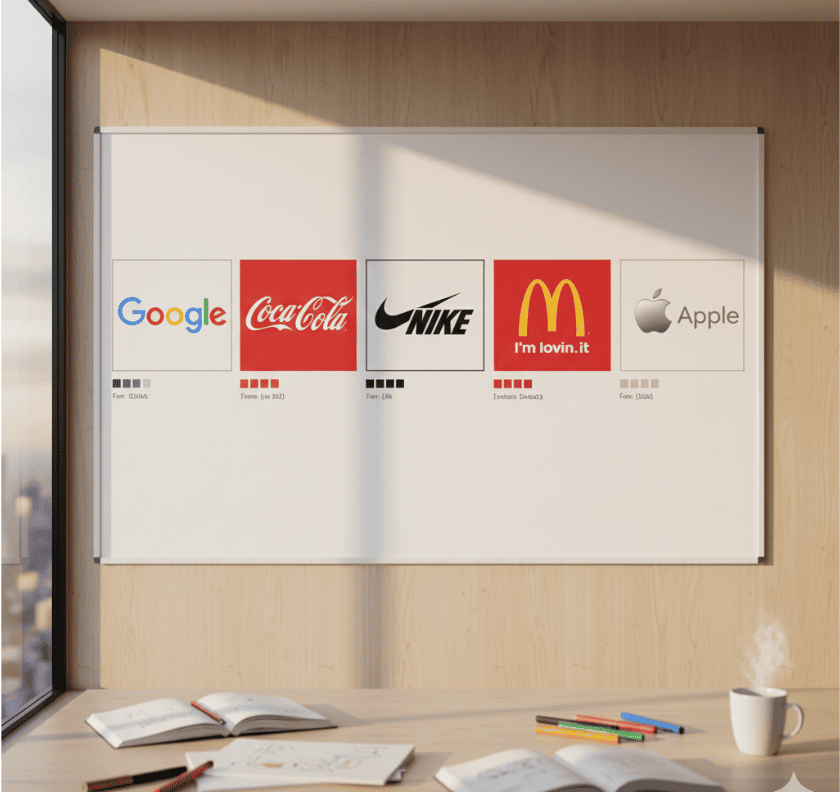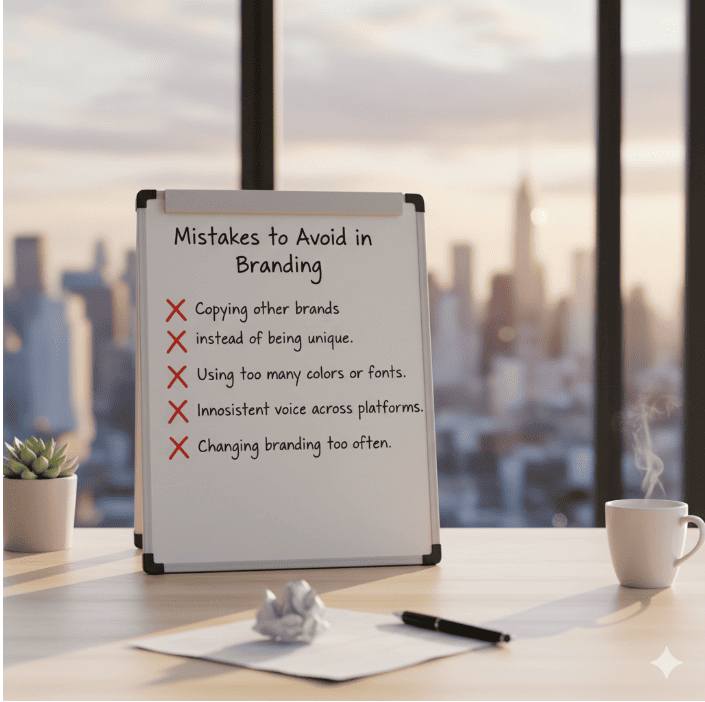Branding is more than colors, fonts, or a nice logo. It’s about how people feel when they see your business. A strong brand builds trust, attracts attention, and keeps customers returning.
Think of branding as your business personality: how you talk, look, and act. It shapes first impressions and shows customers what your business stands for.

Download Your Free e-Book
5 Simple Ways to Create Website & Landing Pages
Affiliate Disclaimer: I earn commission (get paid) if you click on the links and purchase a product below. My earnings do not impact the price you pay.
Even if you’re new, good branding makes you look professional and reliable. You don’t need a huge budget or fancy design to start strong.
What matters most is clarity, consistency, and connection with your audience. Your brand should tell your story in a way people remember easily.
Here, we’ll help you understand branding in simple, clear steps. You’ll learn how to define your voice, visuals, and message effectively. By the end, you’ll know how to build a brand that lasts.

What Branding Really Means
Branding is how people recognize and remember your business. It’s the mix of visuals, words, and emotions that defines your identity.
When done right, branding helps customers trust and connect with you easily. Here’s what builds a strong brand:
- Name: The first thing people see and remember about you.
- Logo: A visual mark that reflects your business personality clearly.
- Colors: Shades that trigger emotion and make your brand stand out.
- Voice: The tone and style you use to communicate your message.
- Experience: How customers feel when they interact with your business.
Together, these elements shape how people perceive your brand overall. Strong branding makes your business memorable and creates emotional connections faster.
When customers feel good about your brand, they’re more likely to stay loyal. That’s why branding is the foundation of lasting business growth.

Know Your Audience First
Before designing your brand, you must know who you’re speaking to. Your audience shapes your tone, visuals, and overall brand personality completely. Understanding them helps you create something that feels relatable and authentic.
Identify Their Traits
Start by learning their age, interests, goals, and daily challenges. Ask yourself what they value most when choosing a brand to trust. Do they prefer something playful, serious, calm, or motivational in tone?
Build a Connection
Create a personality that speaks their language and reflects their mindset. A youthful crowd may enjoy bold fonts and energetic colors overall. A professional audience may prefer sleek visuals and a confident tone instead.
Example in Action
Imagine a yoga brand targeting people seeking peace and balance daily. It might use soft fonts, gentle tones, and calming colors to connect deeply. When branding aligns with your audience, everything feels natural and trustworthy.

Pick Your Business Name and Logo Carefully
Your business name and logo are the face of your brand. They’re often the first things people notice about your business. Simple designs help customers remember and trust your business.
That’s why they must be simple, memorable, and aligned with your message. A strong name creates recognition and builds emotional connection over time.
Your logo visually expresses who you are and what you stand for. Colors and fonts should match your overall brand vibe and tone.
| Element | What It Means | Tips to Remember |
| Name | Your identity and first impression | Keep it short and relevant |
| Logo | Visual symbol of your brand | Make it clean and scalable |
| Colors | Set the mood and emotion | Pick tones that fit your message |
| Fonts | Express brand personality | Choose readable, on-brand styles |
Define Your Brand Voice and Tone
Your brand voice shapes how people feel when they read your content. It’s the personality behind your words; consistent across all platforms. A clear voice helps build trust and create emotional connections faster.

Understand Your Voice
Decide how you want your business to sound to your audience. Is it friendly, confident, inspiring, or playful?
This sets your communication style everywhere. Your tone should reflect your mission, values, and customer expectations completely.
Match Voice With Audience
If your audience is new or casual, keep things friendly and helpful. Use simple words, short sentences, and a conversational tone for clarity. For serious niches, use a professional and authoritative tone instead.
Stay Consistent Everywhere
Your voice should remain consistent across your site, emails, and social media. Consistency helps your audience recognize and trust your brand faster. When your voice feels authentic, customers connect and engage more deeply.

Choose Colors and Fonts That Match Your Brand
Your colors and fonts shape the first impression of your brand. They make your business feel unique and instantly recognizable to customers. Consistency in design builds trust and makes your content look professional.
Why Colors Matter
Colors trigger emotions and influence how people see your brand. For example, blue feels calm, while red feels bold and energetic.
Pick two to three main colors that reflect your brand’s personality clearly. Use one color for accents to create balance and visual appeal.
Choosing Fonts
Fonts also express your tone and help define your brand identity. A playful font suits creative brands, while sleek fonts fit modern ones. Stick to one or two fonts to keep your designs clean and consistent.
Tools for Inspiration
If you’re unsure where to start, try Canva or Coolors. These tools suggest beautiful color palettes and font pairings easily. Keep your final choices simple, clear, and easy to read everywhere.
Consistency Is Key To Building Recognition
Consistency makes your brand look polished and professional across every platform. When people see a uniform look, they start trusting your brand faster.
- Use the same colors, fonts, and tone on every channel.
- Match your website, social media, and email branding for a unified feel.
- Keep logo placement and button colors consistent across all designs.
Every small detail reinforces your brand identity and builds long-term recognition. It also helps them remember you in a crowded online space.
Build a Simple Brand Style Guide
A style guide keeps your branding consistent, organized, and easy to follow. It’s your visual roadmap for maintaining a professional look across platforms.
- Include logo usage rules, color codes, and font combinations.
- Add notes about voice, tone, and how to write messages consistently.
- Even a one-page guide helps new team members understand your branding.
You don’t need anything fancy — clarity and consistency are what matter most.
Mistakes to Avoid in Branding
Branding mistakes can hurt your business before it even takes off. Many beginners copy others or confuse customers with inconsistent design choices.
Stay away from these pitfalls, and this will help your brand stay clear, strong, and trustworthy across all your audience.
Copying Other Brands
Copying big brands makes your business look unoriginal and less credible. Customers want authenticity, not a watered-down version of something they already know. Find your own style, story, and voice that makes you stand out.
Using Too Many Colors or Fonts
Too many design elements overwhelm people and make branding feel messy. Limit yourself to two or three colors and one or two fonts. Consistency creates a professional and cohesive identity across all touchpoints.
Inconsistent Voice Across Platforms
A mismatched voice confuses customers and weakens your overall message. Your tone should feel the same on websites, emails, and social media.
Changing Branding Too Often
Constant rebranding confuses customers and breaks long-term recognition. Stay consistent and only make small adjustments when absolutely necessary.

Conclusion
Branding is about how people feel when they see your business. It’s not just visuals but also trust, emotions, and customer experience.
Strong branding makes you memorable and helps build lasting customer relationships. Start small with clear visuals, consistent tone, and a simple style guide.
You don’t need perfection; just clarity and consistency across your platforms. As your business grows, refine your branding without losing its core identity.
The key is starting today with small, confident steps toward strong branding. After a period of consistency, hard work will definitely pay off.






